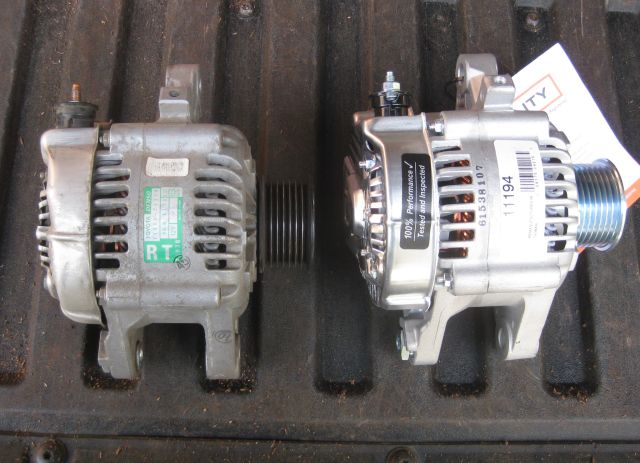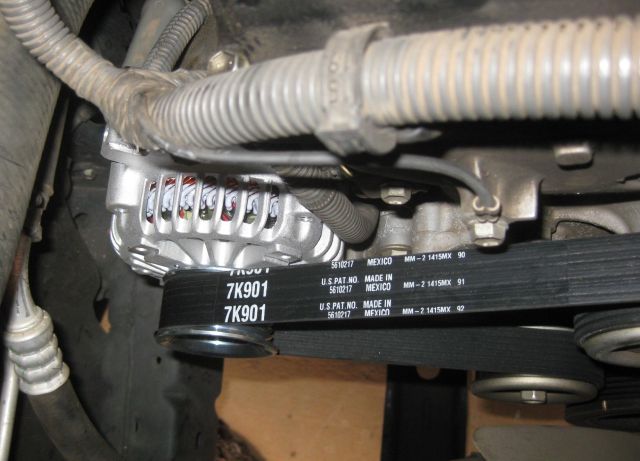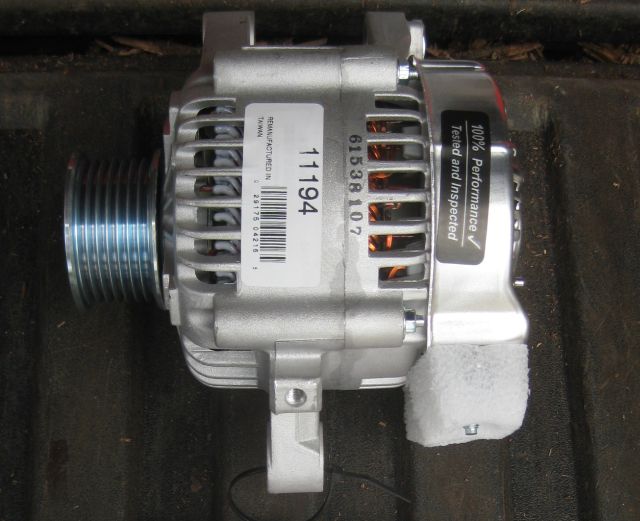My trusty Toyota Tacoma 2005 2.7L at 218k miles was doing fine, until recently I noticed a high pitched whine from the engine area, even when the truck was not moving. The whine was pronounced some days, less so others. It did not seem to come from the engine block (good) but one of the accessories. The serpentine belt is a long belt driven by the engine crankshaft which turns the alternator (charges the battery), the power steering pump, the water pump and the A/C compressor and is held under constant pressure by a tensioner. I found lots of guidance on the internet and, as suggested in one blog, my first stop was at Harbor Freight for a stethoscope ($5).

As luck would have it, when I reached my destination the whine had almost disappeared – isn’t this always the case when you go to the mechanic and the noise cannot be replicated? However when I listened carefully I could just discern it. With the engine running and with care to avoid the spinning radiator fan and the serpentine belt, I carefully probed the reachable accessories and determined the offending noise was loudest with the probe on the alternator.
I had two ways forward – I could replace the bearings on the old alternator or buy a replacement alternator. I watched an excellent youtube video on how to replace the bearings and it seemed well within my abilities. However, I have spent very little to date on repairs and decided to buy a new unit. And “new” could mean OEM reconditioned or non OEM new. I wanted a good quality replacement. Now for some research. Usually Amazon or eBay have the best prices but not this time. In addition to price you need to figure shipping and tax and website probity. I located what appeared a good site for a highish price. And then I thought, why not check out O’Reilly. It would be quicker to pick up the part, easier to return the old part for a core credit and, if a problem with the part, easier to rectify with a visit. They had the part for a competitive price with pulley attached and proposed shipping to my home because their closest store did not carry it. However, most days I drive from Atlanta to the farm and one of their other stores en route carried it. So I ordered it online yesterday and this morning I picked it up and the manager told me it has a lifetime warranty – great.
At the store was a younger guy looking for new lights for his ’08 Tundra. I asked him how many miles he had on it and he said 360k – put my 218k in the shade. He needs to replace his automatic transmission but his engine goes fine. Which is good news and I hope my engine can achieve a similar life. My truck has a manual transmission and no clutch work has been needed to date.
Though my serpentine belt looks fine it is 10 years old and I decided to replace it as well.
Removing the old and installing the new alternator was fairly easy. I first used my voltmeter to read the charging volts i.e. how much electricity the old alternator was producing, which was 14.16 volts.
Then I followed Haynes Manual instructions – disconnect negative cable from battery, remove the serpentine belt, remove the wires connected to the terminal and then remove the 2 securing bolts. I compared the old and the new alternators and they appeared identical.

Installing the new alternator followed the above in reverse. Removing and replacing the belt takes some manipulation and co-ordination. I checked the charging voltage and it was 14.29 – great.

And, most important of all, the whining noise has gone.
update
After I replaced the alternator the car idled poorly. I suspected this was because I had disconnected the battery and recalled that when we had the battery in M.’s car replaced, the auto store assistant connected a small battery to the car (either via OBD or cigarette lighter, I forget) before disconnecting the battery. This also maintains the radio settings and keeps the clock time current. Apparently the problem is more pronounced with older cars and it occurs because the car’s computer makes adjustments for the car’s inefficiencies (throttle body deposits?) as it ages and when the battery is disconnected the computer’s memory is wiped clean and it has to relearn the adjustments. My car is relearning quickly and the idle is almost back to normal.
When I returned the old alternator for the $35 core credit I noticed there is a $20 rebate coupon for the purchase, so I am even happier with the purchase.

